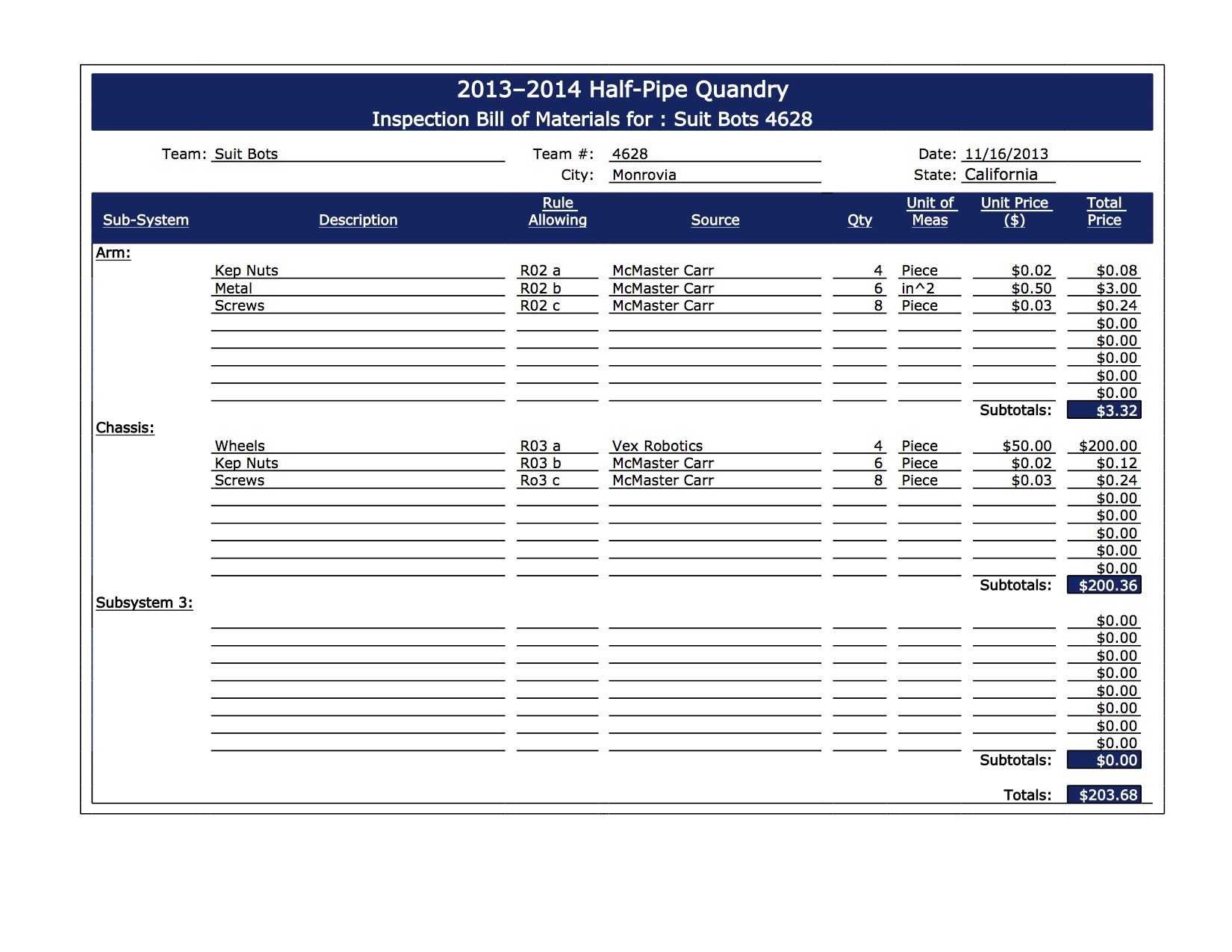At all your hardware inspections, you must present a bill of materials (BOM) to the inspectors to ensure that you are complying with all the FTC rules regarding materials. The bills of materials for different teams can range anywhere from a nicely-typed spreadsheet to a quickly-handwritten-on-the-way-over bill (both of which we happened to use this year). Because the judges, in addition to the inspectors, will be seeing your BOM, you probably want it to look nice and like you put time into it. FRC has this problem solved by having a template for their BOM. We’ve taken their template and tweaked it a bit.

In it you’ll note that each subsystem has it own list. FTC doesn’t require that you do this, in fact, the only parts of this BOM template that are required are the part name and the rule allowing it. The reason that the rest was added is so that it can be a more effective BOM. The purpose of the bill of materials is that if somehow part of your robot disappeared, you’d be able to get all the parts for it. Having the subsystems separated will let you look at that subsystem and see exactly what parts you used for it. Having the source, quantity, unit of measure, and price make it so that you don’t have to go through the hassle of finding how big or how many parts you, and you don’t have to search for the good deal you found initially. Furthermore, if judges see this BOM after a day of handwritten ones, they’ll love it.
Here are links to templates for this BOM:
BOM_pdf — PDF document
BOM_xlsx — Microsoft Excel
